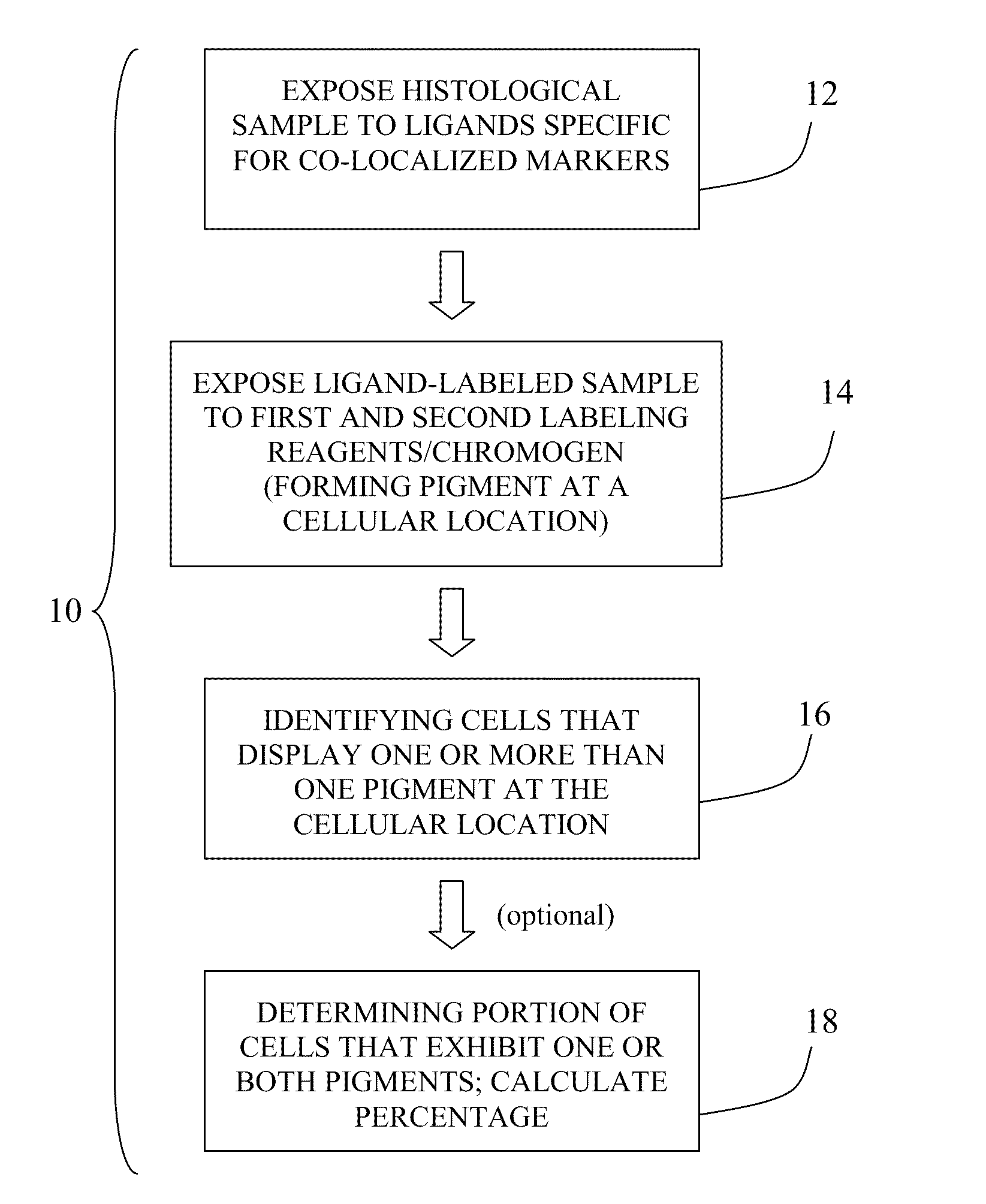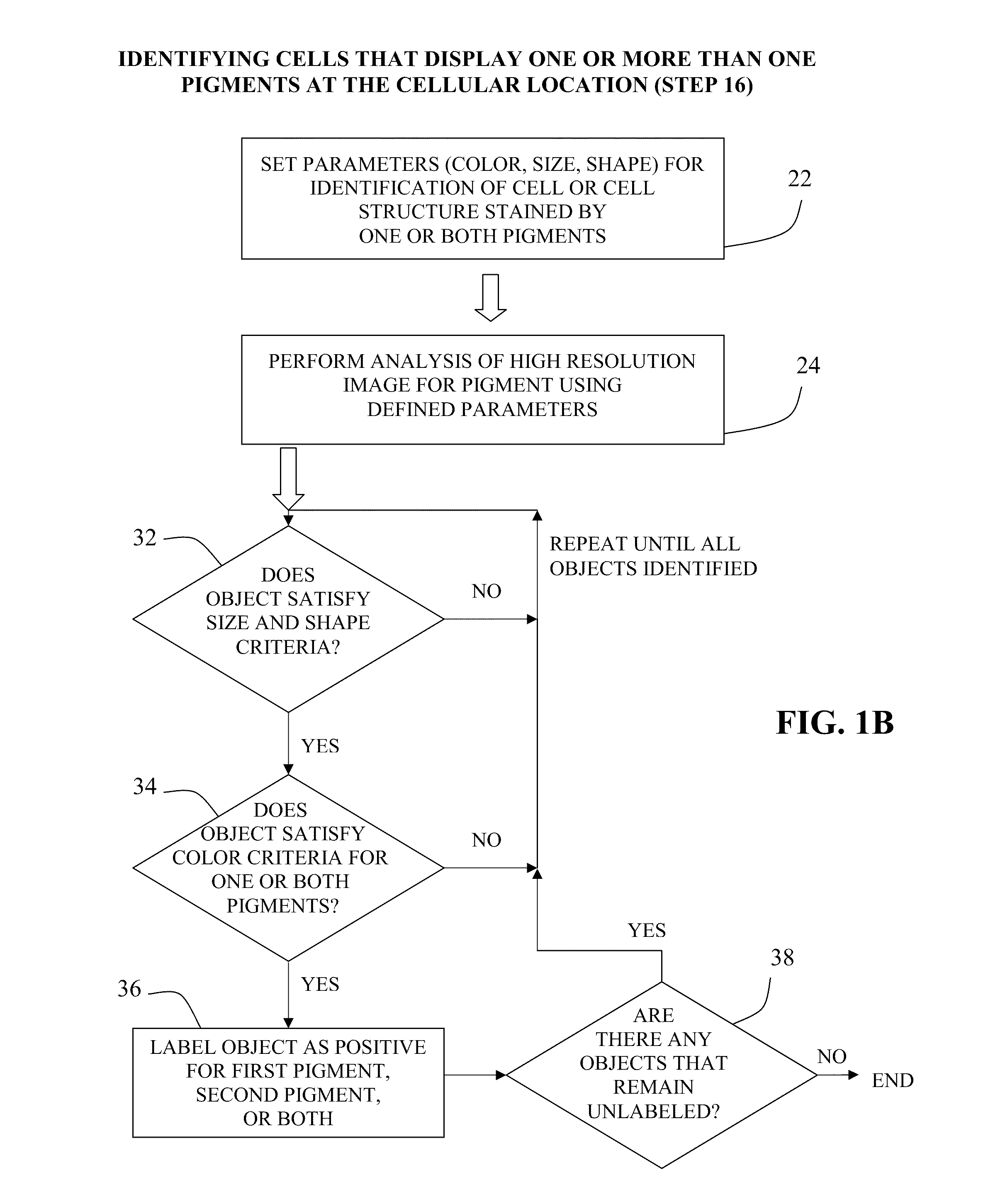Method for double staining in immunohistochemistry
a technology of immunohistochemistry and double staining, which is applied in the field of immunohistochemistry, can solve the problems of inability to exclude, undesirable flow cytometry, and insufficient equipment for diagnostic or pathological laboratories, and achieve the effect of a measurably different imag
- Summary
- Abstract
- Description
- Claims
- Application Information
AI Technical Summary
Benefits of technology
Problems solved by technology
Method used
Image
Examples
example 1
Bone Marrow Specimen Procurement
[0063]Bone marrow specimens were obtained from volunteers without hematological disease at the Hospital for Special Surgery and from multiple myeloma patients at the New York-Presbyterian Hospital under informed consent as part of an Institutional Review Board approved study. The posterior and superior iliac spines were identified before beginning the procedure. The patient was placed in a ventral or lateral decubitus position. The field was cleaned with Betadine and the area of interest was anesthetized with 1% Lidocaine. A bone marrow aspirate and biopsy was performed unilaterally using a modified Jamshidi bone marrow aspiration / biopsy needle, 11 gauge×4 inch. Several 5-7 cc aspirates were obtained by relocating the needle in each aspirate to obtain a total of approximately 30 cc of marrow. The core biopsy was then obtained. The bone marrow core biopsies were fixed in 10% neutral-buffered formalin and paraffin-embedded.
example 2
Immunohistochemistry Using Two Nuclear Biomarkers
[0064]Because cell cycle molecules are not unique to cancer cells and because some tumors are composed of cancer cells that coexist with large populations of non-cancer cells, in such tumors cell cycle analysis requires co-localization, detecting the cell cycle molecule in the cancer cells while excluding non-cancer cells from the analysis. For example, some tumors contain large numbers of actively proliferating immune cells; if they are not excluded from the analysis, assessment of proliferation may yield falsely high data.
[0065]In hematopoietic cancer biopsies, the non-cancer hematopoietic and immune cells must be excluded. In this example, multiple myeloma (MM) cells were identified in biopsy samples with an anti-MUM1 antibody and a detection system yielding a red signal. Specificity of MUM1 for myeloma cells in MM biopsies is estimated at ˜99%, thus excluding non-MM cells from the analysis. Double IHC was performed to detect cell ...
example 3
Automated Image Analysis
[0073]The double stained IHC slides were accessioned into the image analysis system and then loaded onto the machine in batches of 60. A robotic arm picked up each slide, one at a time, and loaded it onto the microscope. Via a motorized stage, the microscope moves and scans the slide, looking for tissue, the location of which varies slightly from slide to slide. Once it has found the tissue, the device scans the tissue and the camera records low resolution images. Using the scanned low resolution images, the inventor selected ten good areas for subsequent high resolution scanning and analysis. Numerous data points were then calculated for each of the ten areas per slide, and those data were averaged.
[0074]Since no counterstain was used in these slides, all identifiable cells are positive for at least one marker (e.g., in FIG. 3A, cells that express neither MUM1 nor pSRb are not visible). The characteristics used for the analysis (“classifiers”) were determine...
PUM
 Login to View More
Login to View More Abstract
Description
Claims
Application Information
 Login to View More
Login to View More - R&D
- Intellectual Property
- Life Sciences
- Materials
- Tech Scout
- Unparalleled Data Quality
- Higher Quality Content
- 60% Fewer Hallucinations
Browse by: Latest US Patents, China's latest patents, Technical Efficacy Thesaurus, Application Domain, Technology Topic, Popular Technical Reports.
© 2025 PatSnap. All rights reserved.Legal|Privacy policy|Modern Slavery Act Transparency Statement|Sitemap|About US| Contact US: help@patsnap.com



